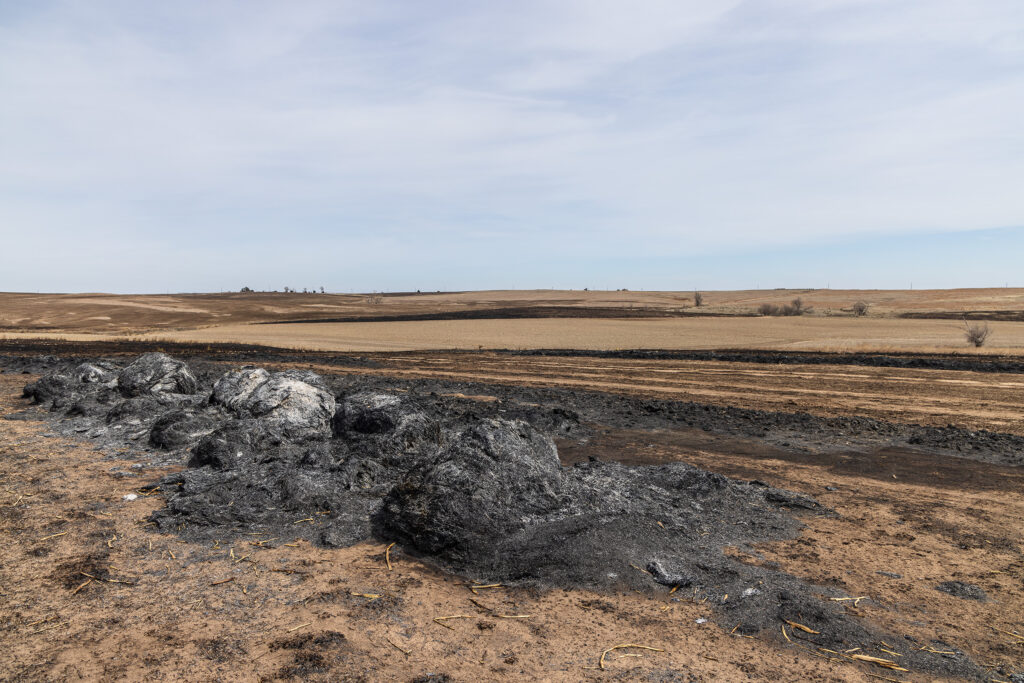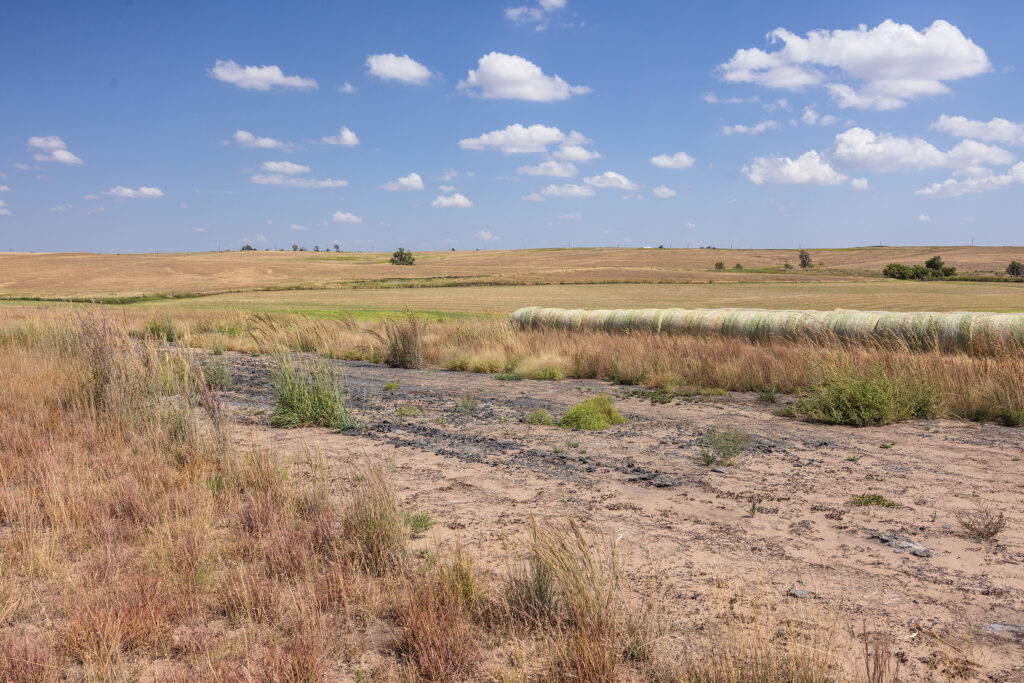
As Bill Peetoom drives down gravel roads that crisscross Ellis County, Oklahoma, just a few miles from the Texas border, he points out contrasting colors and patterns in the grass pastures and prairies on either side of his pickup.
To the casual observer, the grass appears to be a solid, unified stand of native and improved prairies, but Peetoom can identify where fires blackened the rolling hills as catastrophic wildfires – fueled by winds – ripped across the county in February 2024.
The day the fires broke out, Peetoom received a call while in nearby Cheyenne alerting him to the fires near his family’s ranch headquarters.
As he headed back home to the Shattuck area, Peetoom said he recalled what it was like driving north toward the billowing smoke.
“When I was coming home from Cheyenne, it was just paralyzing to think what you could be coming back to,” Peetoom said.
The Catesby Fire burned more than 90,000 acres in Ellis county, and was one of several wildfires that roared across western Oklahoma and the Texas Panhandle. More than 152,000 acres burned in Oklahoma alone, according to the Oklahoma Department of Emergency Management.
Immediately following the fire, donations of hay bales, fencing supplies, cash and more poured into the area from across the state and the region. The Oklahoma Farm Bureau Foundation for Agriculture purchased fuel cards to refuel trucks delivering donated hay.
When OKFB visited with Peetoom a week after the fires, there were many unanswered questions: How much hay was needed to carry ranchers through the winter? How long would it be until the pastures were usable? How long would recovery efforts take?
Six months later on a mid-September day, Peetoom stood in one of his pastures that had been scorched by fires. A few hundred feet away sat stock trailers with the tires burned off. A corner post on a nearby fence was blackened but mostly intact.
Aside from the burned equipment and torched fence line, the grasses, trees and other plants looked the way one would expect for late summer. Peetoom said timely rains helped burned areas bounce back with life, and he elected to keep cattle off recovering land, helping the much-needed forage to reestablish itself.
“It was just a matter of a few weeks before we started getting some showers, and everything started greening up immediately,” Peetoom said. “That moisture came at the right time to really set things off and grow back. We had also had a really good year the year before. The rains the year before came later, so we had green up into the fall, and it actually carried over a little bit of moisture.
“With the timeliness of the rains this spring combined with the little bit of the carryover we had, it just fell together and the recovery we had was just phenomenal.”
Peetoom said the hay donations that poured into the area likely saved several ranchers from liquidating their herds after losing almost all their available forage in late winter.
“It saved a lot of ranches,” Peetoom said of the donated hay. “Practically everybody in our area lost some if not all of their hay and different amounts of pasture land from marginal burns to complete burns. The ones with the more complete burns, a lot of them lost numerous cattle, which in some cases were insured to a certain extent. Some of them had no insurance on the cattle themselves.
“There were numerous ranches that would have had to sell out because they had no pasture and no hay. If it hadn’t been for the donated hay, their operations were done right there.”
Beyond the grass lost during the fire, area ranchers lost miles and miles of fences. Peetoom said the first crews were able to start rebuilding fence on his family’s ranch in early September due to the sheer scale of rebuilding efforts in the area.
“My estimate right now is that between our two places, we’re probably going to end up having somewhere between $120,000 and $150,000 worth of fencing replaced, which basically is 20 years’ worth of fencing costs.” Peetoom said. “And that’s just getting us up and functional.”
In addition to the lost forage, equipment and sadly even cattle in the fire, Dennie Jenkins, a rancher and a member of the Catesby Volunteer Fire Department, said seven homes were lost north of Shattuck, impacting several rural families.
Jenkins said the lush grass across the area, particularly in acres enrolled in the Conservation Reserve Program, presents a challenge to the volunteer fire departments who serve as the first line of defense for their neighbors during a fire.
“That grass gets all the way from knee-high to waist-high, and gets thick as hair on a dog,” Jenkins said. “When fires go through that grass, it takes a lot of water to knock down those flames.”
Through the efforts of local and regional fire departments, lives and properties were protected from the flames. With the influx of support from the Oklahoma and Texas agricultural communities, livelihoods were sustained until the grass returned. Amidst ongoing recovery efforts and prayers for timely rains, Peetoom and his neighbors will carry on their ranching legacies thanks to the blessings of community.
The Oklahoma Farm Bureau Foundation for Agriculture: supporting volunteer fire departments
In the aftermath of the February 2024 fires in western Oklahoma, the Oklahoma Farm Bureau Foundation for Agriculture collected donations that poured in from around the country to support the affected agricultural producers and rural communities.
The foundation, Oklahoma Farm Bureau and Oklahoma Farm Bureau Insurance each donated $30,000 to match relief donations. Within a week of the fires, $10,000 worth of fuel cards were donated to support the transportation of donated hay into the affected areas.
The foundation is making additional donations in October 2024 to the rural volunteer fire departments that responded to the fires, helping them replenish funds and maintain readiness.
50 • Rural volunteer fire departments received donations of $2,000 each $110,000 • In donations and matching funds given to fire relief efforts.


